Software Engineering Statistics: Market Share, Trends, and Growth Patterns
We’ve gathered some relevant software engineering statistics, fresh industry reports, and expert insights to find out why this market is getting more competitive and what challenges software engineers are facing.
Software engineers and developers have quickly become some of the most sought-after professionals worldwide. But if software engineering is in demand, why is it so hard to get a job or even an internship in this field? If the market is so crowded, why is software engineering getting more expensive?
To answer these questions, we need to understand the current state of the software engineering market, how it’s changing, what’s influencing it, and where it’s heading.
Key Software Engineering Statistics and Facts
Software development is a subset of software engineering, an umbrella term that covers a variety of branches. The main software development market segments are:
- Productivity software
- Enterprise software
- System infrastructure software
- Application development software
In 2021, the global software market reached a whopping $565 billion. The largest segment is enterprise software, with projected revenue of $237 billion in 2022.
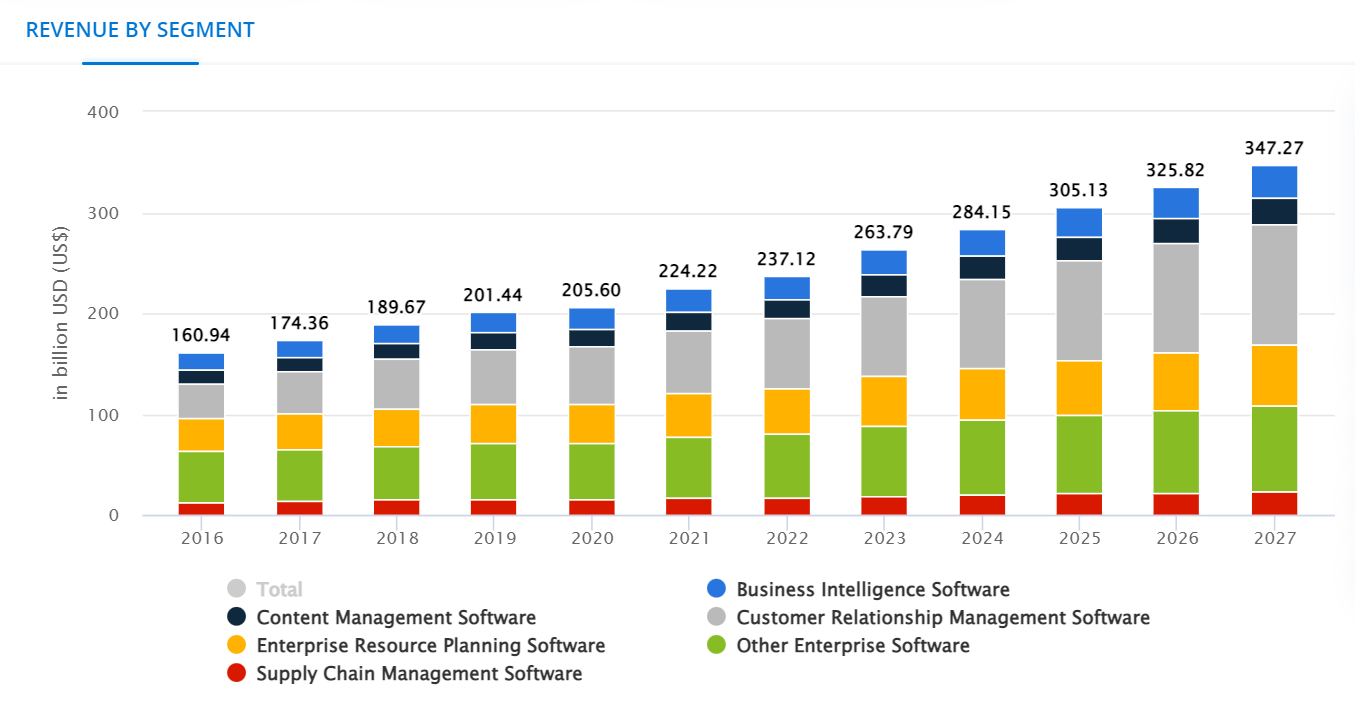
The demand for software engineers has doubled since 2020. The negative effect of the COVID-19 pandemic was rather short-lived, as the software market value is expected to continue growing at an annual rate of 6.5%. According to Statista, the top 5 software markets are the United States, Germany, Japan, the United Kingdom, and China.
Software is typically provided in one of two ways:
- Software-as-a-Service (SaaS): This cloud-based model allows end users to access software online without having to download or update it — the provider is responsible for its hosting and maintenance. SaaS companies often utilize subscription-based, pay-as-you-go, or one-time-use revenue models. Currently, one of the biggest SaaS companies is Salesforce.
- On-premise solution: In this traditional software distribution model, the end user installs and runs the software on their device. For data integrity and security reasons, this model won’t go out of style anytime soon — many businesses in highly regulated industries rely on it. Microsoft is a good example of an on-premise software distributor.
Many software engineers start their careers in SaaS companies. The industry is booming — in part because the recent pandemic made many companies go remote and increase their cloud spending as a result.
The SaaS market is estimated to reach $208 billion by 2023:
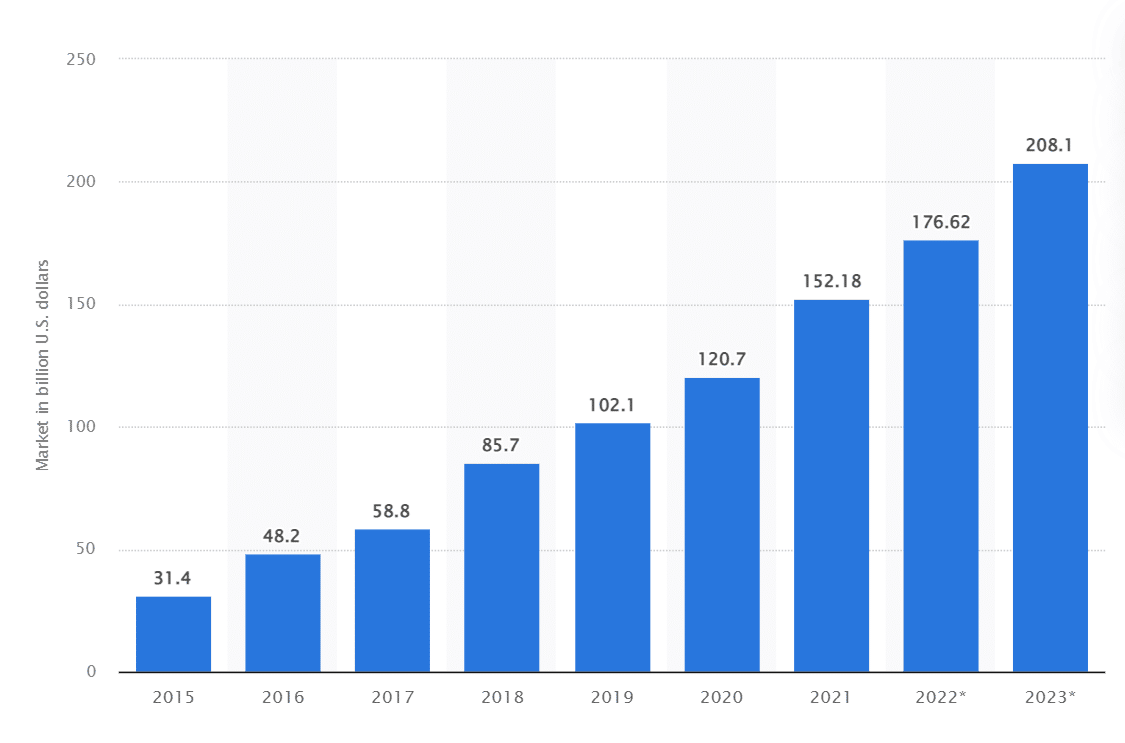
Cloud-based solutions are usually more scalable, affordable, and device-independent than on-premise software, which explains why almost 70% of tech and communications companies are hiring for cloud-related positions.
But when it comes to job opportunities, software engineers’ choices aren’t limited to purely high-tech companies and IT providers. Many niche industries digitalize at breakneck speed and urgently need software architects, developers, analysts, machine learning engineers, cyber security professionals, and data scientists.
Some of the most popular industries for software engineer careers include:
- Finance
- Healthcare
- Retail
- Security
- Research
- Government and defense
- Automotive
- Gaming
- Education
- Transport and logistics
Software engineer and developer roles make up more than half of Glassdoor’s list of best jobs in 2022.
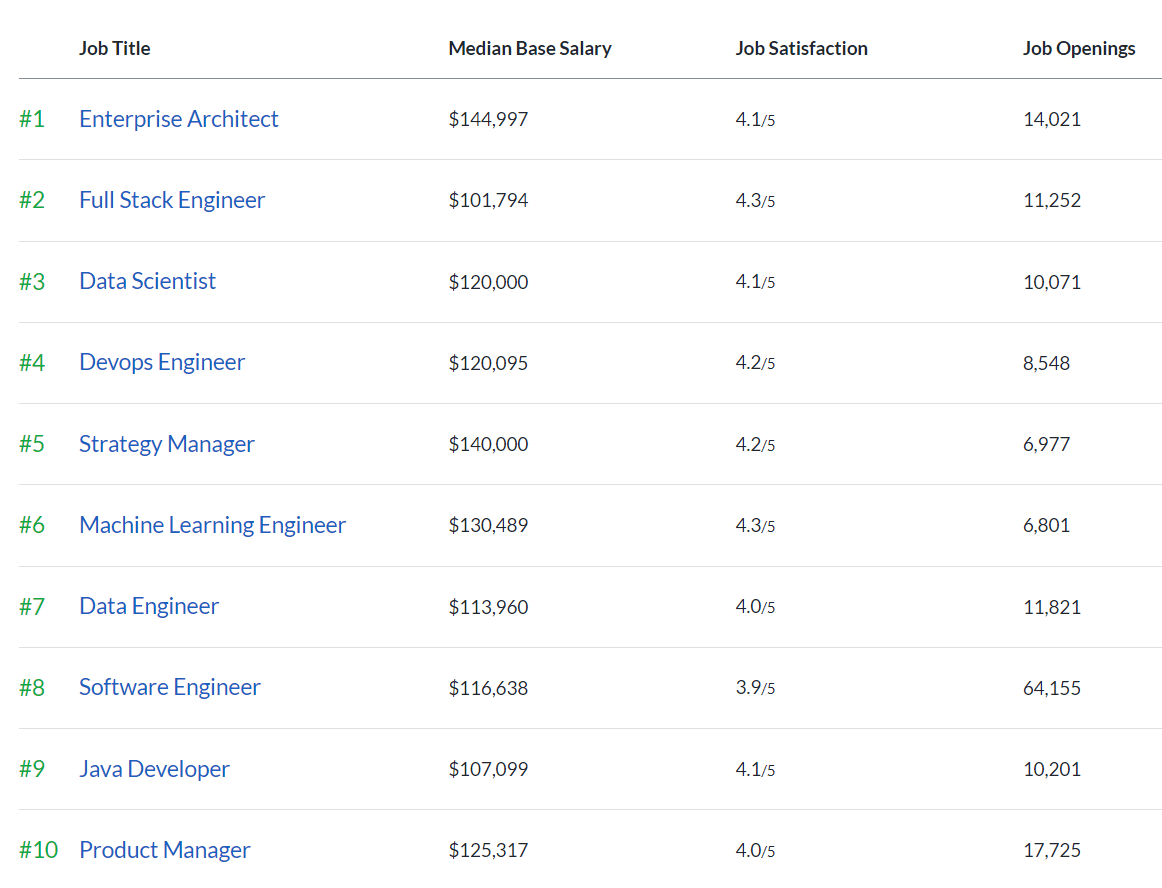
A software engineer usually earns a new title as their career advances. The job title hierarchy varies from company to company, but the standard software engineering career levels in order of seniority are:
- Staff engineer
- Senior staff engineer
- Principal engineer
- Distinguished engineer
- Fellow engineer
Software engineering jobs may have more exotic-sounding or playful titles, like software artisan, software Jedi, or even full stack magician, but it’s a candidate’s skill sets that’ll define who’s going to be a good fit for the company.
Software Engineering Trends
The tech industry is rapidly evolving, and this is reflected in the software engineering landscape. Many software engineers focus on a specific niche instead of becoming generalists to have a more definitive career ladder.
The field now has many promising subdisciplines and trends. For instance:
- Artificial Intelligence engineering combines the principles of systems engineering, software engineering, and computer science to create AI systems for solving real-world problems.
- Cloud computing is the on-demand delivery of computing services, like servers, storage, databases, networking, software, and analytics, over the internet to offer better scalability, remote control, and potential cost savings.
- Decentralization is changing the fabric of the internet. Decentralized software delivery infrastructures, networks, and data architectures are becoming more ubiquitous due to their agility and efficiency.
- The Internet of Things (IoT) software engineering focuses on device integration to create a perfect blend of software and hardware solutions for real-world applications, such as smart home automation.
- Open source is freely available code or software for developers to build on top of. Open source assets are created and maintained by other experienced coders, and they help facilitate collaboration and innovation.
- Low-code/no-code is a software development approach that relies on auto-generated code. Proponents of this approach use visual tools and components to write programs instead of manual coding.
- Cybersecurity engineering is a subdiscipline focused on analyzing threats, creating and implementing security protocols, and ensuring that software components have no vulnerabilities.
Now, we’re getting closer to answering the questions posed in our intro. Software engineering trends emerge and develop pretty fast, but tech universities can’t always keep up with student demand. As a result, while tech enterprises need skilled professionals today, those lucky few graduates will need a few more years of experience to become hirable for big-name companies.
Top Software Engineer Tools and Technologies
Software engineers have to know multiple web development languages, tools, frameworks, and platforms just to be able to compete for an open position, let alone be hired.
Let’s see what some of those are, starting with the most used programming languages:
- JavaScript
- HTML/CSS
- Python
- SQL
- TypeScript
- Java
- Bash/Shell
- C#
- C++
- PHP
However, the list of top-paying languages looks rather different:
- Clojure
- F#
- Elixir
- Erlang
- Perl
- Ruby
- Scala
- Rust
- Go
- LISP
It’s a similar story with the highest-paying databases — the ones that are commonly used didn’t make it to the top of the list:
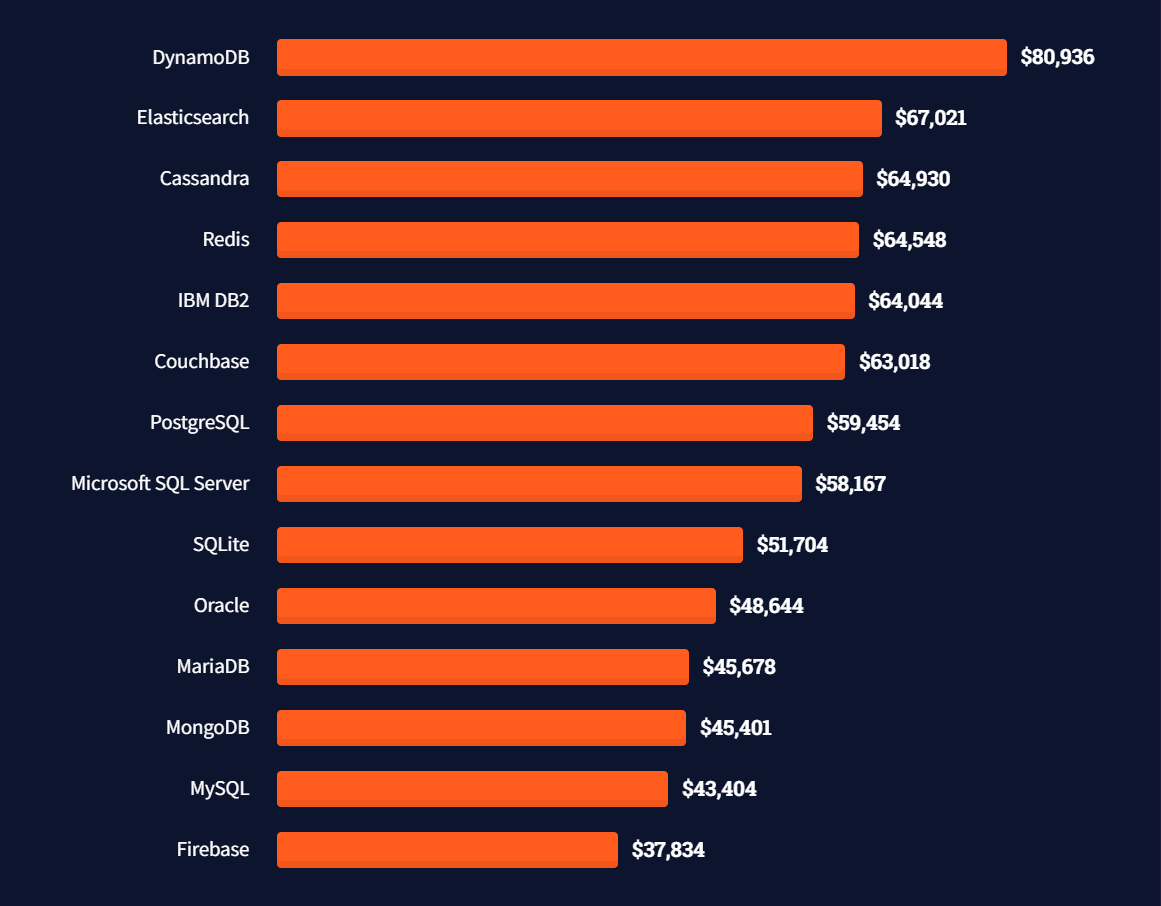
The most used software development frameworks are:
- NET
- Numpy
- Pandas
- Spring
- TensorFlow
- Flutter
- Scikit-learn
- React Native
- Apache Kafka
- Electron
The highest-paying frameworks include Go, Ruby on Rails, Svelte, ASP.NET, Gatsby, and React.js, based on the software engineering statistics compiled by Stack Overflow.
Amazon Web Services (AWS) is the most widely used cloud platform, followed by Google Cloud and Microsoft Azure:

Other fundamental tools that software developers use include:
DevKinsta is powered by Docker and keeps your local WordPress sites isolated and secure. It offers a local environment for developing WP themes, plugins, and more. Try and use it for free to design, develop, and deploy WordPress sites from your local machine hassle-free.
Common Software Engineer Skills and Responsibilities
To build the necessary software engineering fundamentals, freshman applicants usually choose one of the following bachelor’s programs:
- Computer Systems Engineering
- Software Engineering and Business Informatics
- Software Development
- Computer Science
- Application Software Development
- Human-Centered Design & Engineering
- Game Development
Becoming a software engineer is also quite expensive — students can expect to pay between $37,000 and $91,000 in total tuition.
Almost 60% of software developers acknowledge that they learned how to code from online resources, so a relevant degree alone doesn’t necessarily make one job-ready.

Software developers and engineers have some overlapping functions and responsibilities, but the latter focus on the bigger picture. A software developer can become a software engineer if they have the right educational background and are ready to develop or deepen the necessary skills for the job.
A software engineer is typically responsible for:
- Overseeing the software development process
- Software testing and maintenance
- System design
- Determining operational feasibility
- Software deployment
- System integration
- Debugging and troubleshooting
- Creating and managing database applications
- Developing technical documentation, charts, and layouts
Staging environments help developers test and deploy code quickly and securely. Kinsta’s WordPress staging environments, in particular, give you granular control over your website content and updates.
Software engineers work on a bigger scale than software developers and typically take on higher-level responsibilities. The following soft skills are mandatory for software engineers, especially for senior positions:
- Time-management
- Readiness for lifelong learning
- Teamwork, collaboration, and leadership skills
- Communication skills
- Problem-solving skills
- Conflict resolution skills
- Creativity
- Product management skills
- Critical thinking
A highly skilled software engineer can land a top-paying role, such as enterprise cloud architect, security architect, or data architect.
Average Software Engineering Costs
In 2021, the average annual salary for software engineers was $155,000. Remote wages for software engineers are increasing as foreign companies expand their reach and start to compete with the US market.
The average salaries for software development and engineering roles are:
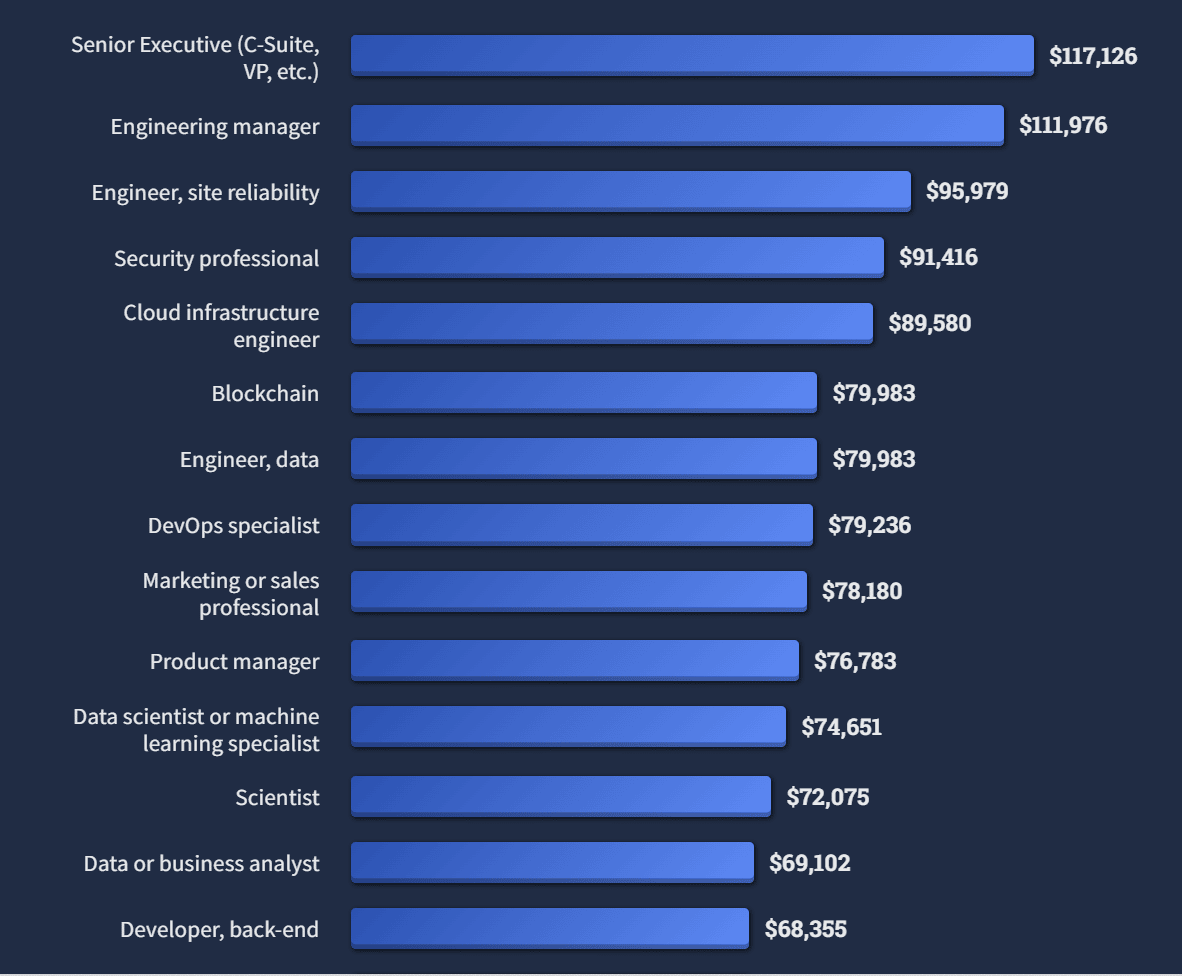
It’s common practice to build project teams that include at least one senior developer and one to two junior developers to reduce expenses while preserving quality. Seasoned software engineers often charge $400 an hour or more.
Small and medium-sized businesses can get away with paying between $110 and $220 an hour for projects ranging in size from $50,000 to $5 million. Offshore and nearshore developers will most likely charge you less, but in that case, things like code quality, language barriers, and time differences come into question.
Interestingly, part of the reason why software engineering costs are so high is that small companies offer software engineers attractive pay. Enterprises often have to compete with startups when it comes to hiring tech talent.
Companies can cut their software engineering costs by ensuring their team’s productivity and uninterrupted workflow. Here are the biggest areas of time loss for software engineers:
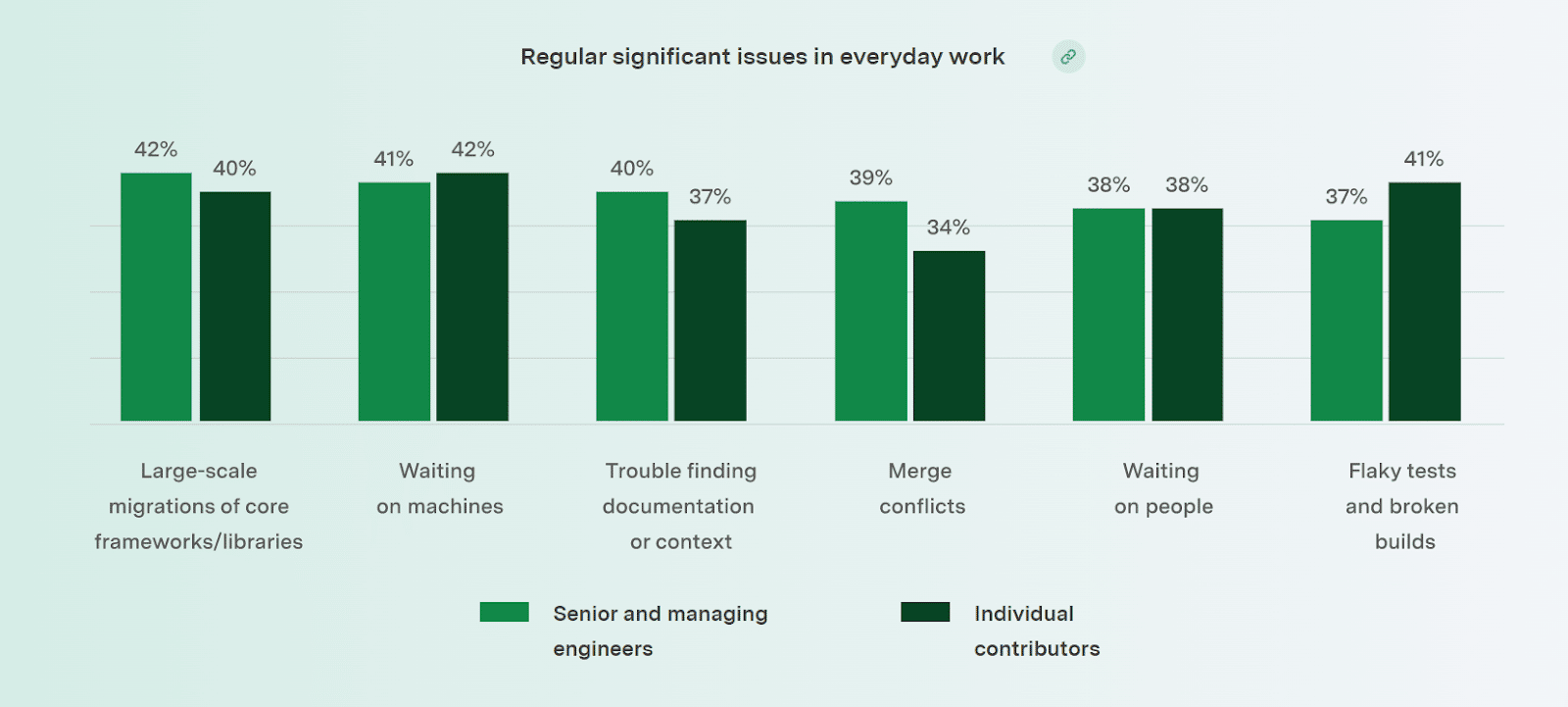
38% of engineers say that waiting (e.g., large-scale migrations or waiting for code review) eats up a lot of their time. And 30% of developers say they’d prefer to spend less time recruiting and interviewing.
Software Developer Demographics and Motivations
As the global tech industry’s growth accelerates, more developers are choosing non-traditional education pathways, such as bootcamps and self-paced learning. Nevertheless, 41% of software developers in the US have a bachelor’s degree, and 21% have a master’s degree.
There were 24.3 million active software developers worldwide at the end of 2021. The median age for software engineers is 43 years old, and 61% of developers are younger than 35 years. These figures have gradually decreased with the entry of more young professionals into the workforce.

Here are the top motivation drivers for software engineers and developers:
- New challenges
- A sense of fulfillment
- Endless learning
- Knowing their purpose and value
- Being part of a global tech community
- Belief in the product they’re working on
- Pushing the boundaries of technology
It’s not the exorbitant salaries that make students decide to obtain a computer science degree — or, at least, it’s not just them. Software engineering can be an extremely thrilling and rewarding job.
However, high demands also mean high pressure. Two out of every five people working in tech are at a high risk of burnout, and stress seems to affect women especially. Even senior professionals openly speak about their personal burnout stories:
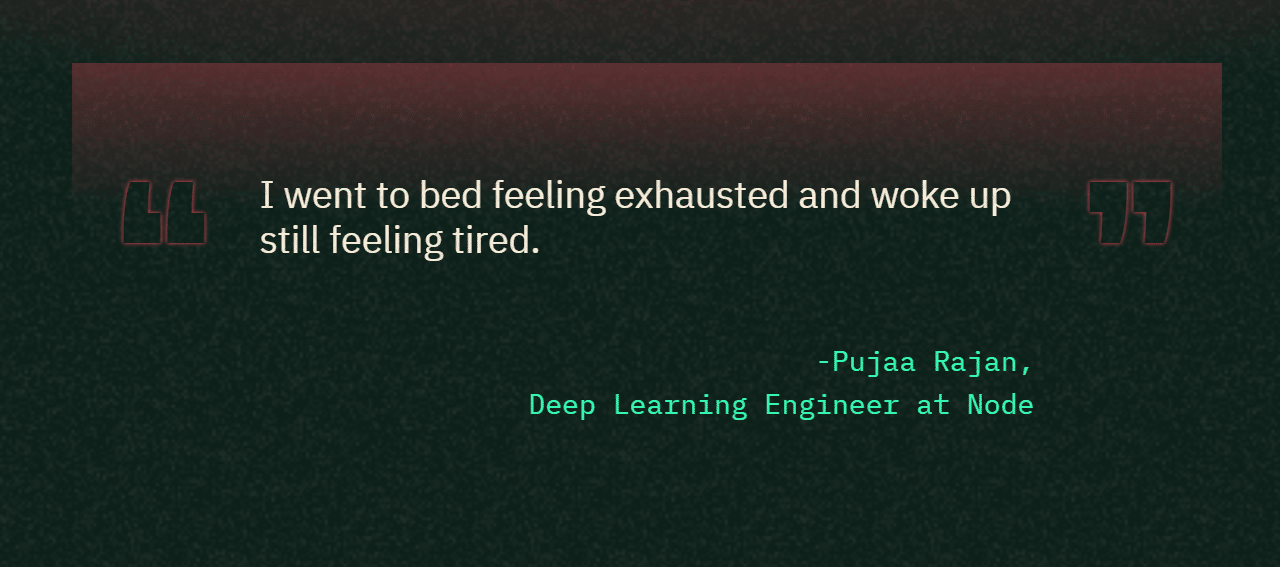
43% of the population at high burnout risk struggle to find satisfaction in finishing their everyday tasks. The tech industry has some of the highest resignation rates across industries.
However, 83% of software engineers and developers say that they prioritize their mental and physical well-being. And many tech professionals are happy at work.
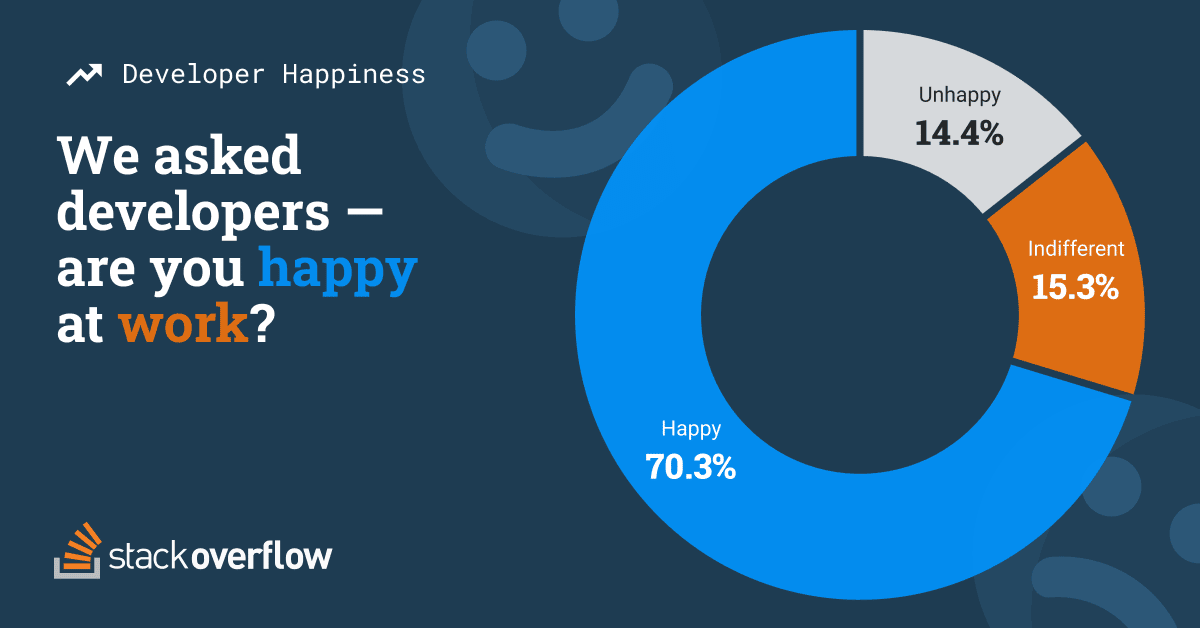
Today, tech professionals expect their employers to encourage their happiness at work through:
- Rewarding pay
- Healthy communication and lack of distractions
- Flexible working hours
- Frequent check-ins
- Growth opportunities
- Reducing workload
- Positive and inclusive work culture
- Less demanding timelines
- Work-life balance
- Employee recognition
- Healthcare
- Free mental health days
Many tech companies are addressing diversity and inclusion, but the real changes are occurring rather slowly. The software development field is still pretty homogeneous — only 20% of all people working in it are women, according to Developer Nation. Other sources show even lower figures.

The same goes for race and ethnicity. However, we expect to see a new, more diverse group of developers enter the workforce, thanks to the gradual democratization of tech education.
As of now, 39% of software developers identify as White. Some sources suggest that this number may be even higher — as high as 52%. Comparatively, 33% of developers are of Asian ethnicity, and 6.9% are of Hispanic or Latino ethnicity. These figures vary depending on the respondents’ proficiency.
Remote Software Engineering Statistics
According to surveys on LinkedIn, over 50% of software developers work remotely, and 85% say their organizations are at least partially remote.
A 2022 survey conducted by Stack Overflow shows the following remote software engineering statistics:
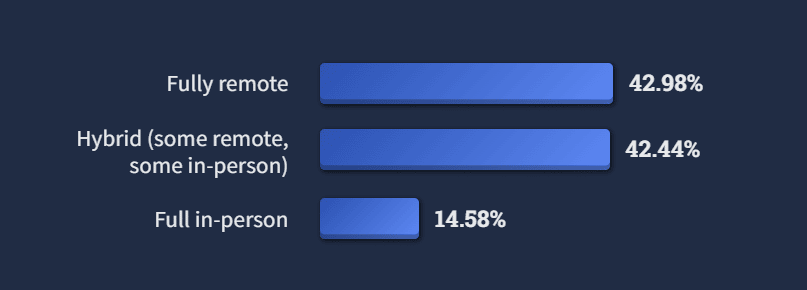
Software engineers who are ready to work remotely find themselves in a better position — they receive 20% more interview requests compared to their counterparts who prefer in-person work.
74% of engineers would like to be remote 3 days a week or more. Surprisingly, smaller organizations are more likely to have in-person engineers, whereas larger organizations with 10k+ employees usually offer a hybrid work model. There are two reasons behind this:
- For small businesses and startups, it’s especially important to cultivate a collaborative culture and loyalty, which is easier to do face-to-face.
- Big companies can afford expensive morale-boosters and enterprise-grade tools for their remote employees to mitigate the effects of the long-distance format.
Software engineers have different takes on location-based salaries:
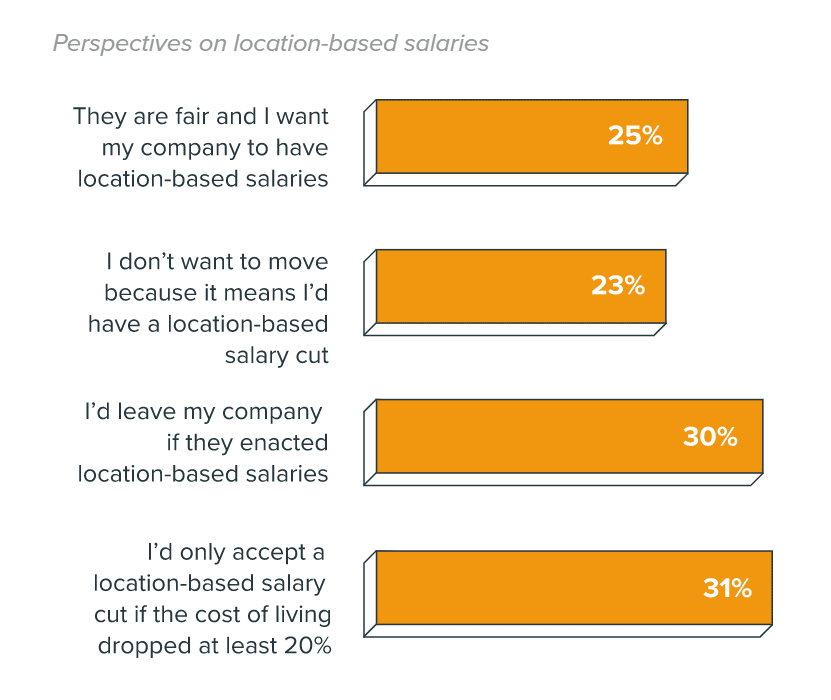
68% of engineers say that working from home improves their productivity and reduces their stress levels. Contrary to popular belief, older generations of engineers prefer flexible working arrangements, while younger professionals don’t mind working in an office setting.
Pay transparency is especially critical for engineers who work remotely. According to Terminal’s report, 89% of remote software engineers think that tech companies should offer equity compensation.
Moving to Silicon Valley for a software engineering job isn’t as desirable as it used to be. The highest software engineer salary increase, 9%, happened in 2021 in Austin, Texas. The balance is shifting because tech talent is gradually relocating to smaller, less trendy areas with a lower cost of living.
Software Engineering Outsourcing Stats
The global IT outsourcing market was valued at $526.6 billion in 2021. Some analysts expect it to reach $806.63 billion by 2025, while others make more modest forecasts, valuing it at $682.3 billion by 2027.
The IT outsourcing market can be broken down into three categories:
- Onshore: The outsourced specialists are based in the same country.
- Nearshore: The IT operations are outsourced to a neighboring country.
- Offshore: The outsourcing destinations are located overseas.
Businesses tend to outsource their software development and engineering projects for multiple reasons:
- Hiring coders from regions with a high cost of living, such as California, is too expensive by default.
- Building and guiding a developer team requires a lot of managerial effort.
- Spikes in demand create global tech talent shortages, which are hard to overcome if you’re only hiring locally.
- Aggressive competition for tech talent causes top performers to increase their rates and be more selective.
- Remote IT service providers offer an unbeatable economy of scale by connecting organizations with reliable professionals overseas.
When looking at software engineering statistics, IT sourcing is cheaper in 31% of cases:
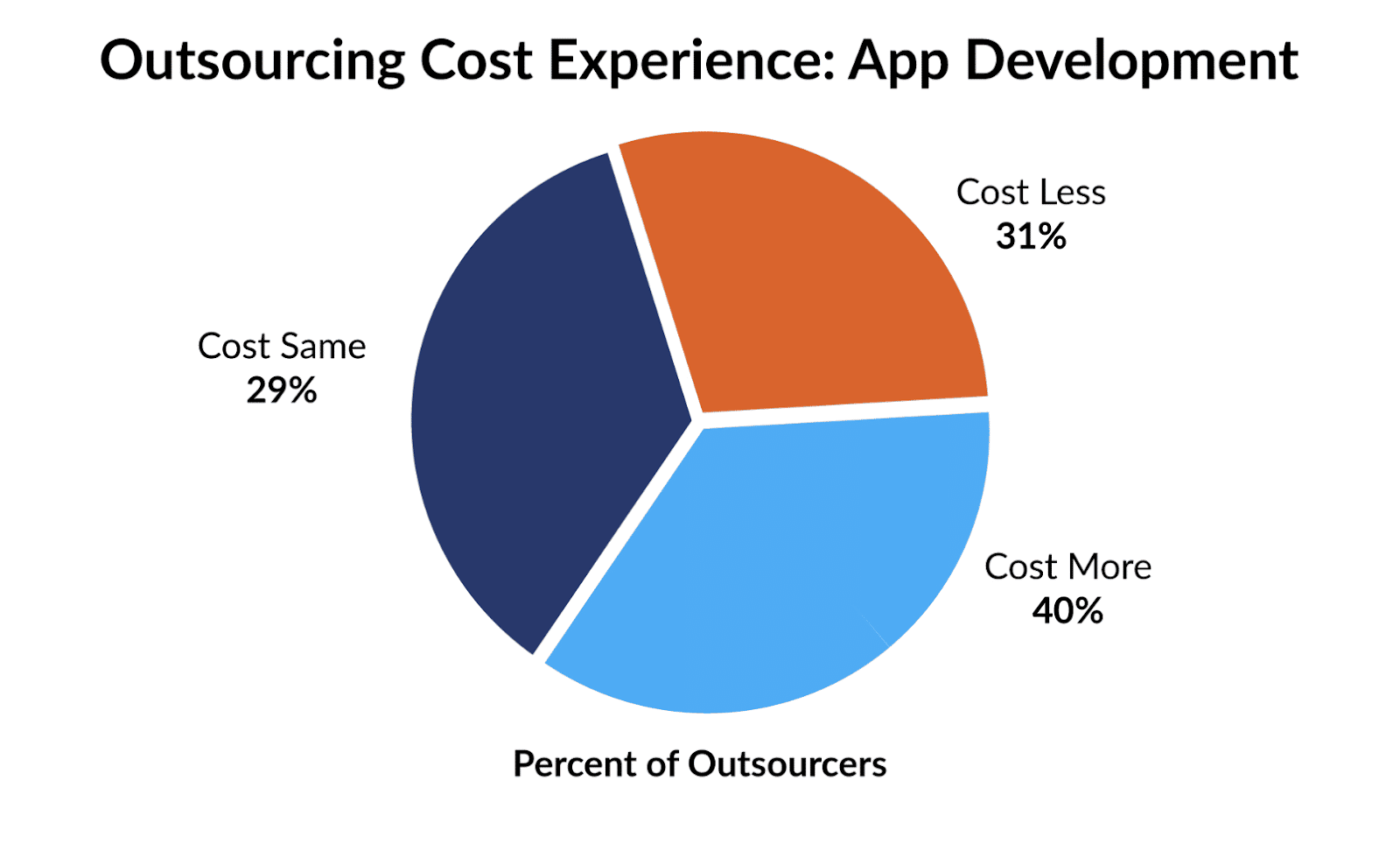
Outsourcing accounted for 13.6% of the total IT budget, on average, in 2021. About 60% of companies now outsource at least some of their application development processes.
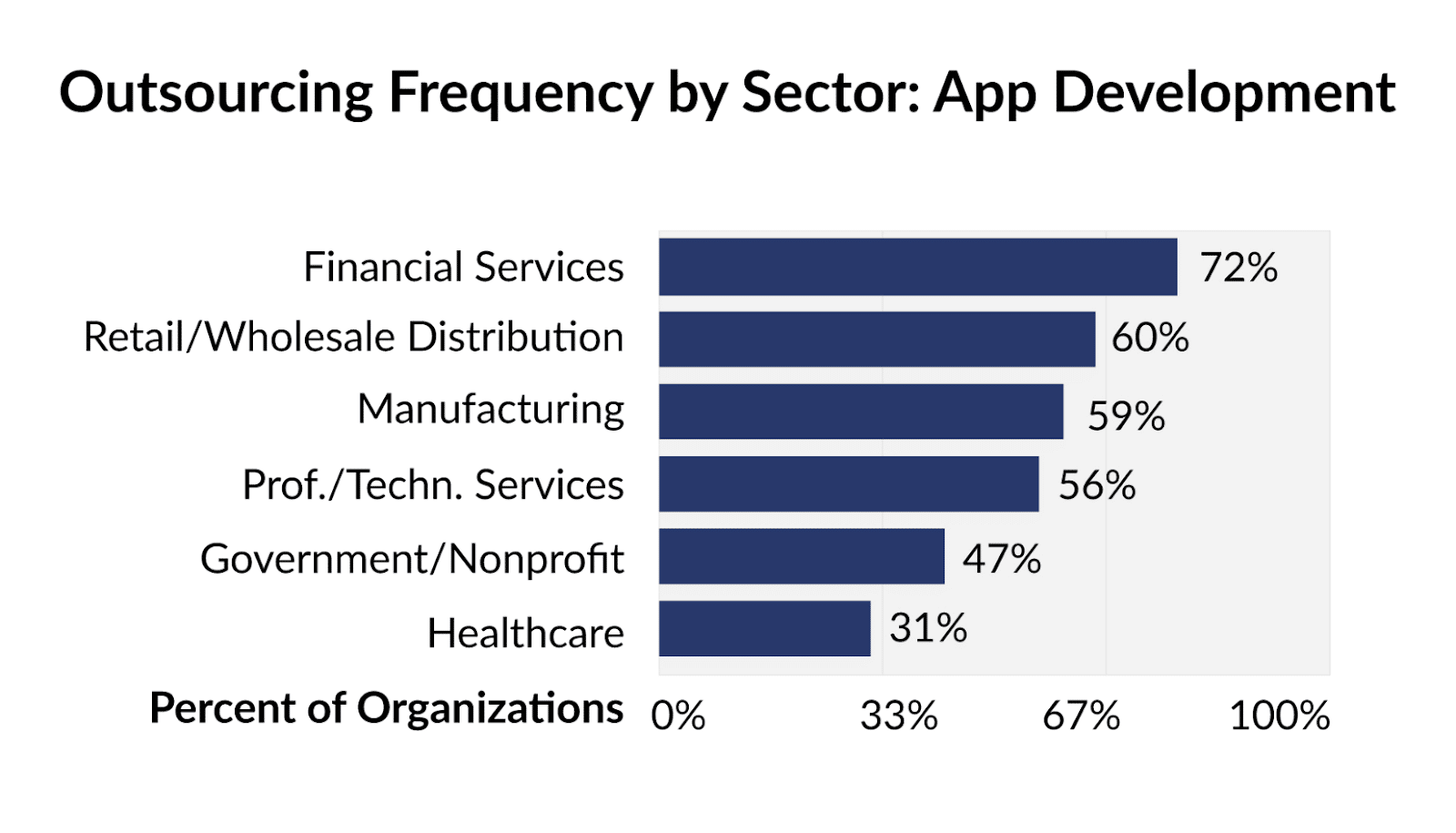
India dominates the global IT outsourcing market. However, King White, CEO of Site Selection Group, a global location advisor, is convinced that China will soon outpace India to become one of the most lucrative outsourcing markets in the world.
Among other lucrative markets for IT outsourcing are Israel, Pakistan, Armenia, Malaysia, Vietnam, and Eastern Europe.
Key Takeaways
Here’s what we’ve learned from these software engineering statistics:
- The market is more competitive than ever, but there is a shortage of highly skilled and specialized professionals.
- Companies need software engineers now, so they cut corners by hiring top talent instead of developing engineering leaders in-house — which is cheaper but takes years.
- Companies turn to outsourcing because domestic IT resources are costly and scarce.
- Tech professionals move away from the grind mentality and choose companies that support employees’ mental health and offer flexible working conditions.
- Universities’ slow pace of change results in fewer work-ready graduates.
- New trends and technologies, such as the IoT, create thrilling, diverse career paths for engineers and developers.
- Many software engineers and developers rely on online resources and coding bootcamps more than traditional education.
- Industry trends are changing every year, and employers and tech professionals have to stay flexible to win the race.
Summary
Now you can see why it’s tricky to find a software engineering job or internship — it’s the top talent that HR is after. Enterprises don’t always have the time or patience to nurture their own professionals, which perpetuates the current imbalance in labor supply and demand.
Thankfully, the situation is bound to change. The new generation of developers is entering the job market, and the variety of coding schools and bootcamps makes software engineering education more available to more people.
Check out our current openings if you’re looking for an exciting and challenging remote job as an engineer or developer. Kinsta offers a flexible work environment and a positive culture. We help you stay connected with your team members while also making sure that everyone has enough time to rest and recharge. If you’re willing to learn and grow with us, apply now!